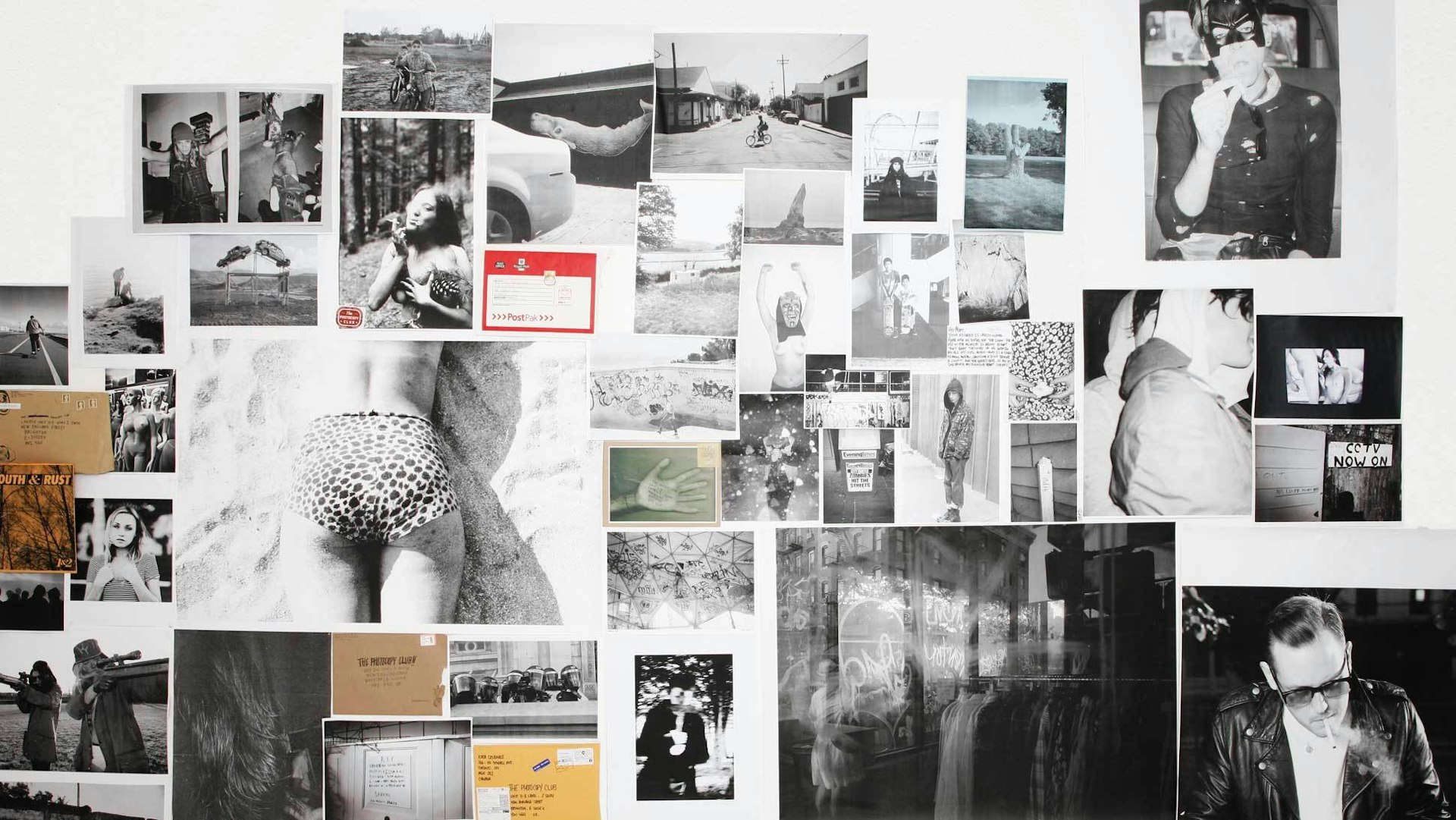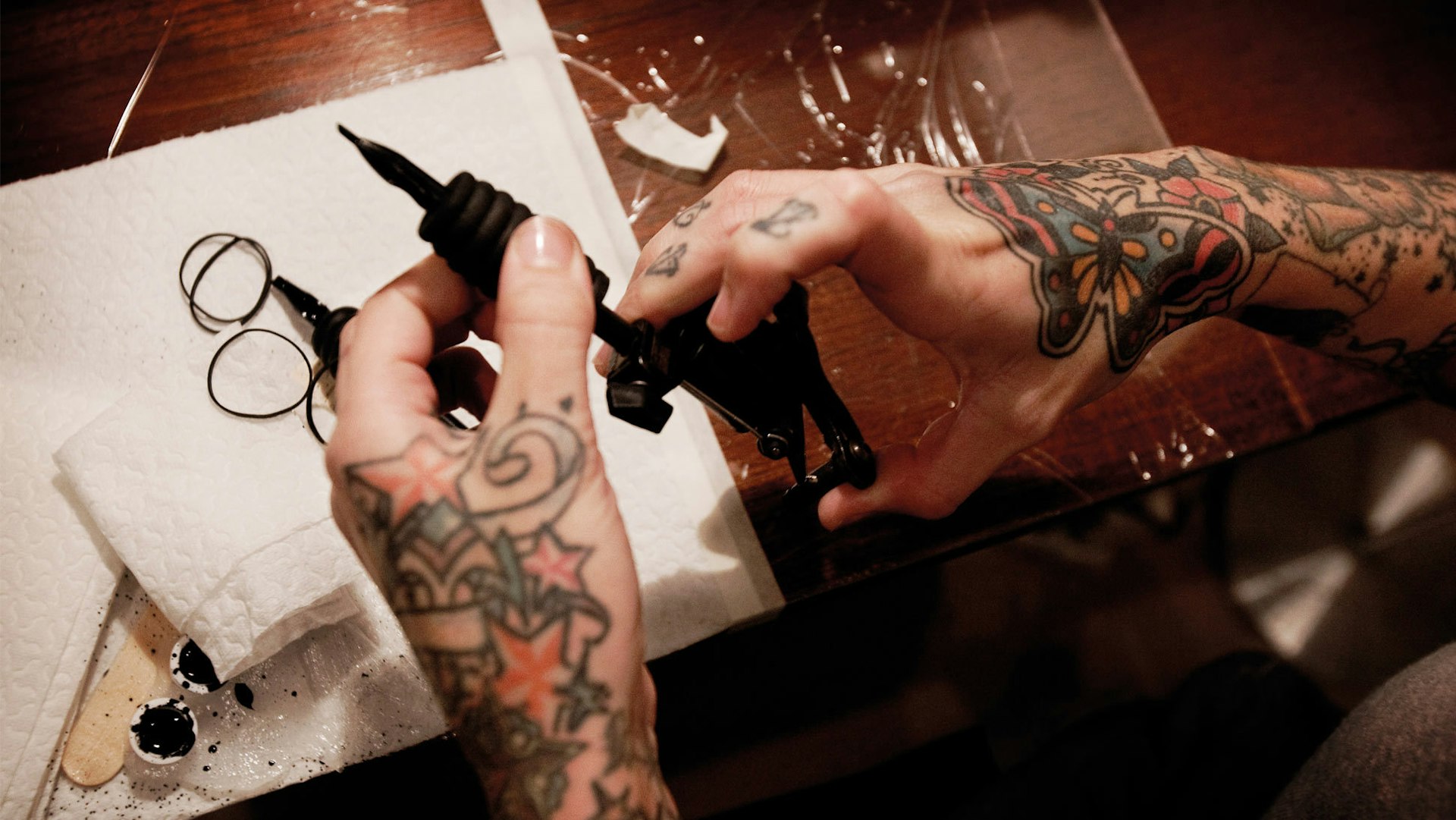
The Photocopy Club
- Text by Shelley Jones
As well as shooting pics and publishing ‘zines, Brighton-based photographer Matt Martin spends a lot of time supporting his contemporaries through curated blog WEARELUCKY and his new project, The Photocopy Club. The latter is a monthly open-submission exhibition that encourages photographers all over the world to photocopy their work, sign and date it and then send for a group show where visitors can buy the artwork straight off the walls for a few quid.
“I wanted to set up a platform for young contemporary photographers to show their work without the problem of expensive print costs and the difficulty of getting work into a gallery,” says Matt.
With an overarching desire to “get photography off the internet and get printed matter back in the the hands of the public”, The Photocopy Club is constantly reaching out to shooters across the globe and recently installed postboxes in art colleges around London where people can just drop their work to be collected.
“Basically we want the show to be like a giant ‘zine that everyone can take a page from,” says Matt. “We’ve had work from all over – Australia, Canada, Japan, Italy, Spain and France to name a few. I can’t believe it’s stretched so far. I got e-mails from kids in Brazil asking if I could help them do a Photocopy Club exhibition there. It’s crazy but people like the idea, so it just took off.”
We reached out to some previous contributors to get their take on this lo-fi concept.
Paul Vickery
“Having unlimited access to imagery on the internet is something we’ve all got used to and take for granted, and yet owning a piece of art or a photographic image is still financially out of a lot of people’s reach. Being able to see the work up close and actually owning it for next to nothing is a really neat idea. The response has been great. It’s a really cool way of connecting with your audience. […] Everyone’s used to seeing images on a computer screen and images get passed all over the globe in this way – but how long do we spend actually looking at those images? I mean really looking? Rarely do we see these images in print, except I guess in magazines or in galleries. Looking at a print (including a photocopy print) is a very different experience to looking at an image on a screen. A still photographic print allows someone to really engage with that work. It’s something they may go back to time and again.”
Van Robinson
“I feel like it’s one of the best ways to get your work out into the world. You don’t have to have a popular website or blog. Everybody who goes to the show, or participates in it, will see your work and hear your name. And it’s awesome that people go out of their way to check out exhibitions. It’s not like scrolling around the internet where they just skim over the work. They want to go look at it. […] Not only does it take away that idea that only wealthy people can buy art from galleries by opening the doors to a much bigger audience, but it also makes it possible for somebody who might not have access to a darkroom or a professional printing lab to go and get prints made for dirt cheap. And if someone wants a duplicate you don’t have to perfect it in the darkroom, you can just go copy it again. I am constantly selling prints that I have made on large format xerox machines. People know that five dollars for a poster-sized print is an awesome deal, and they know that it is a lot more unique than a glossy 8×10 print. […] For a while now I have been shooting with the intent to print everything, whether it’s in ‘zine form or a giant poster. I want people to be able to physically hold my photos, or always see that print on their wall. And by doing that I feel like it has a much bigger impact. Somebody could breeze right by one of my photos online, but when they see a huge poster of it, it catches their attention and makes them look at it.”
Dimitri Karakostas
“The Photocopy Club means that, hopefully, people get to see something that they can say, ‘Oh, that’s nice’ about, especially in the packed-room openings. I usually hope something sticks with them – even if they don’t care who I am. […] I think of it as being able to experience the internet in real life. That, and I’d really rather not spend six months rent and six weeks printing photos. Xerox exhibits just make sense, even if it’s a strictly ‘by photographers and for photographers’ mandate. I’d much rather be out shooting and spending cash on gear than toiling over dust on prints for weeks. […] [Shooting, printing and sharing] makes me more privy to my surroundings, I guess? More open and willing to explore, much more eager to give back. I just take photos of things I think are important, so it makes sense that a lot of my work involves the same things over and over.”
Craig Mammano
“For me, an exhibition like this is a fleeting opportunity to interest people in a larger body of work and what that work is trying to communicate. It also means that I don’t have to spend a shitload of money on printing, matting, framing, glass and shipping just to have something hang on a wall for a month or two and then have to lug the shit around with me every time I move. [..] Photographs are meant to be seen and communicate something to others so it’s important that the work is accessible to as many people as possible. Otherwise I’m just talking to myself.”
Milo Belgrove
“Sharing your work in an exhibition, particularly an open-submission group show is a chance to evaluate your work against people working in a similar fashion to your own, but outside your regular group of ‘critics’. It’s very easy while at university, for example, to purely go on the words of your classmates or tutors. […] I’m undecided as to whether this is a good thing or not in the long run. Yes accessibility is extremely important and with that comes affordability. I’d just hate to see people price down their talent the same way that clients sometimes try to do if you shoot digitally. Anyway, long live print.”
Valerie Phillips
“I usually avoid group shows, as I’m partial to work that has a more narrow focus than what most themed group photo shows tend to offer. The Photocopy Club is different to the usual themed group show format in that it seems to have a refreshing, fun, democratic attitude to curating. It invites you submit whatever pictures you want, and if you like what you see when the show is up, you can buy a piece then and there, and take it home. It’s nice being part of that. And I much prefer pictures shown as photocopied prints tacked to a wall, than vacuously presented on Flickr or elsewhere on the great impersonal world wide web. The preciousness with which photography is generally revered, when shown in a gallery setting, is a little tedious and outdated for my liking. Being able to buy a piece of paper straight off the wall of a show is really interesting to me. I like that The Photocopy Club is forging ahead in that DIY, punky spirit that has produced so many amazing bands and so much great art. This attitude is sadly lacking in so much of the safe, sanitised imagery we’re surrounded by at the moment.”
Michael Barolet
“Today photographers and artists are forgetting what it is to look at art off of a computer screen. Having work hanging on a wall for people to touch, hold and purchase is wonderful. It’s the way art is meant to be seen. It means the world to me to have people appreciate an original piece of my artwork. […] Art isn’t cheap. So what The Photocopy Club is doing is fucking awesome! They are allowing artists to show their work in a super cheap format. This allows collectors, or anyone for that matter, to purchase art for pocket change rather than hundreds or thousands. It’s also great knowing that someone can buy art and not worry about rolling it up and sticking it in their back pocket. […] Well, since nobody really writes anymore, and ninety per cent of photographs are kept on hard drives that will probably crash at some point, the process of print is very important. I was taught to envision the final print in my head before I ever clicked the shutter. If you envision things in black and white, and in hard contrast, it allows you to see things you might have not seen before.”
Asia Werbel
“I love a bit of feedback! Most of my work is intimate, a bit voyeuristic, but that is the nature of photography. I like an audience. When I take a photograph of a moment I am the audience. By showing my work I am reversing that role. Anything that gets people excited about still imagery, that allows them to revel in the unique power of the perfectly frozen moment, is a good thing. […] It’s always good to get photography off the internet and printed. It reignites a passion for print, a tangible object, in an affordable way (rather than pixels). It keeps photography available to a wider audience, not just as a fleeting onscreen image, but as something they can live with.”
